
Fora’s Take
Morocco is a unique country to visit, with its natural landscapes and mixture of new and old world cities. The food, architecture, desert and religious and cultural coexistence draw you in to experience another world. Everyone who wants to experience something totally different than what they know should travel to Morocco.
The Fora Difference
Book with our team of advisors to unlock exclusive perks and discover hidden gems.
Killer perks
Free upgrades, spa credits and more—we got you
Personalized recs
Customized travel planning for your style
Insider knowledge
Expert advice from people who’ve actually been there
Where to stay
Unlock perks by contacting our team of advisors to book your trip.
Day 1: Casablanca

Most tourists land in Casablanca’s Mohammed V Airport (CMN). It's best to spend one night in Casablanca to experience the most cosmopolitan city the country has to offer. Imagine New York City-meets-Paris-meets-North Africa.
Many tourists skip Casablanca, making it feel more authentic. You’ll want to visit Hassan II Mosque, the second largest functioning mosque in Africa, and the seventh largest in the world. Its grandeur and meticulous Moorish architecture make it a must-see. It is also one of the only mosques in Morocco that non-Muslims are allowed to visit.
Dining in Casablanca
Get to know Casablanca through its modern European cuisine. Grab a meal at Le Cabestan, overlooking the beautiful El Hank Lighthouse. Reservations are highly encouraged, and remember that many higher-end restaurants in Morocco turn into clubs with loud EDM music starting around 9:00 pm. Dine on the earlier side to enjoy the calm views without the party vibes, if you so prefer. Or stay to have the full dinner and clubbing experience.
For something slightly more relaxing, enjoy a meal at Le Doge Hotel Café Rooftop, a boutique five-star property in the Art Deco district of Casablanca with an intricate Asian-Moroccan fusion menu.
Day 2: The Northwest coast

Travel to Rabat, Morocco's capital, where you will spend the afternoon getting to know key Islamic and French-colonial landmarks like the Kasbah of the Udayas, the Mausoleum of Mohammed V and the city's iconic Hassan Tower, a 12th-century minaret.
As you work your way up the Atlantic coast, briefly visit Asilah, a historic town whose medina was built by colonial Portuguese in the 15th century. While Portuguese is no longer heard in the street, you might notice some architectural familiarities with Lisbon or Porto.
Finish the day in Tangier, a Moroccan port on the Strait of Gibraltar, where Spanish influence is still strong after more than 40 years of Spanish protectorate. You might hear some Spanish in the streets. Know that you’re less than 10 miles from Spain, and can see the Spanish mountains and Gibraltar from your hotel.
Word to the wise for light sleepers:
There are mosques across every neighborhood in Morocco, and because the first daily Islamic Call to Prayer (Fajr) often takes place early as 4:30 am to 5:00 am, you might want to bring a pair of ear plugs. It’s important to confirm with the hotel front desk how close to a mosque they are located, and if your room faces outward (larger chance of being woken up) versus inward (more quiet).
Day 3: Tangier and Chefchaouen
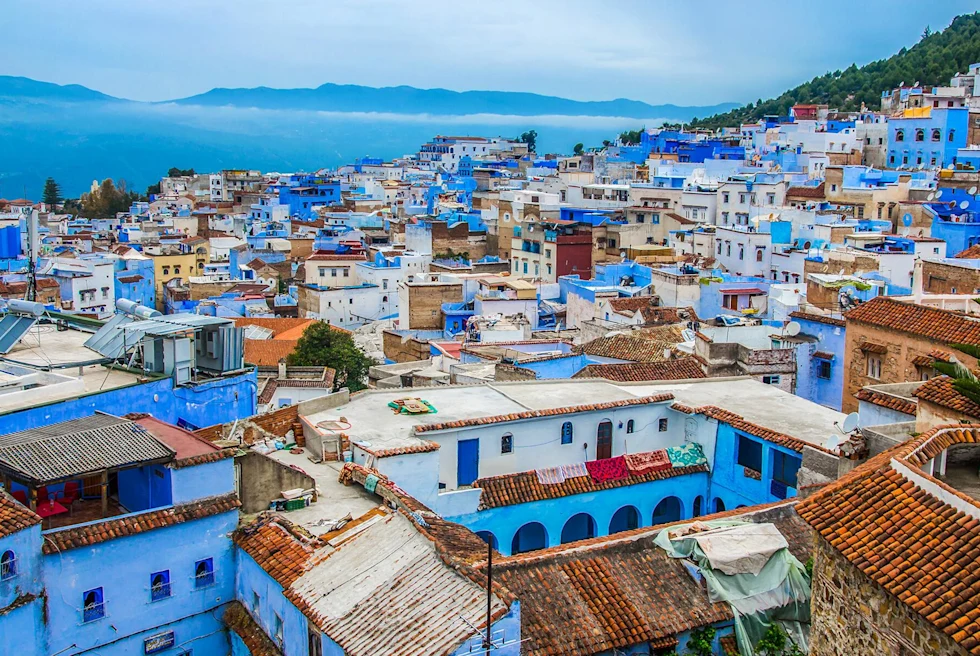
Tour Tangier in the morning to visit the Dar el Makhzen, a palace of the sultans that's now a museum of Moroccan artifacts. The American Legation Museum, also in the medina, interestingly documents early diplomatic relations between the US and Morocco in an 1821 Moorish-style former consulate.
Next, head to Chefchaouen, nestled high in the Rif Mountains, and famous for its bright shades of blue, undeniably one of the world’s most picturesque cities. Finish the day with a short 30-minute hike to the Spanish Mosque for an incredible sunset view.
Stay at a beautiful medina guesthouse like Riad Cherifa to have an authentic experience and savor the local blue-tinted architecture.
Word to the wise:
Many tours include a visit to Hercules Cave on the outskirts of Tangier, where Hercules allegedly broke apart Europe from Africa, but feel free to leave it out if you’re strapped for time.
Places to eat & drink
Enjoy dinner at one of the many delicious restaurants with outdoor views of the Rif Mountains. Café Clock’s menu and live music always impress.
Day 4: Chefchaouen, Roman ruins and Meknes
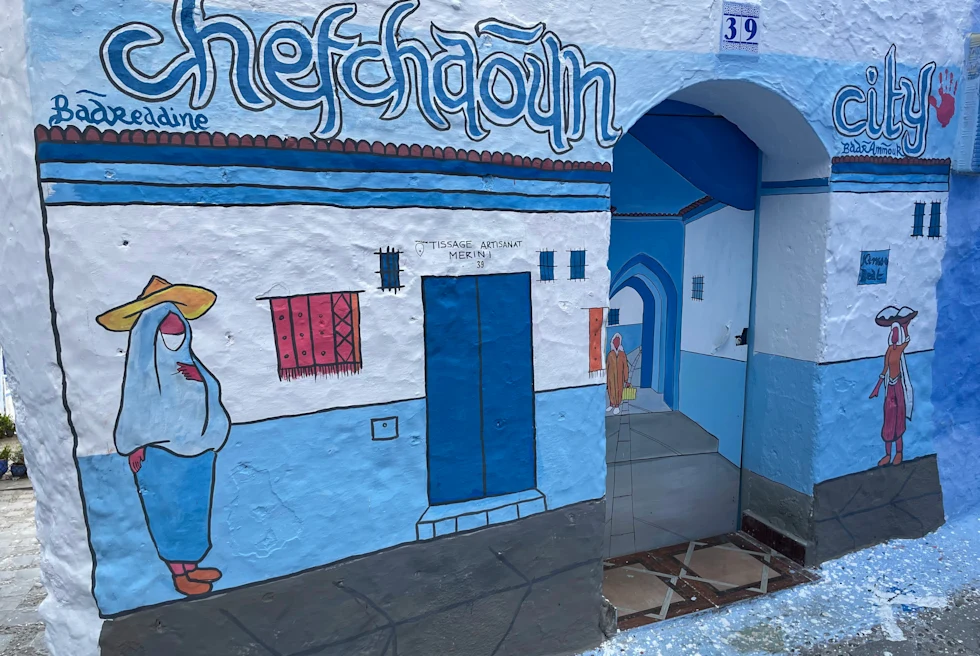
Tour the Chefchaouen medina and get lost in its winding alleys, unique doorways and hidden plazas to discover the city’s allure. Shop for artisan handicrafts, and take as many pictures of the Blue City as you want.
Continue on to Volubilis, a UNESCO World Heritage Site, the excavated Berber-Roman city that might have been the capital of the kingdom of Mauretania. A tour guide will help you get the most out of your visit
A short drive away you’ll visit Meknes, the former capital of Morocco. The city is known for its imperial past, with remnants including Bab Mansour, a huge gate with arches and mosaic tiling. The Mausoleum of Sultan Moulay Ismail, who made the city his capital in the 17th century, has courtyards and fountains which are a beauty to visit.
Drive to Fes to rest up and get ready to spend the next day exploring the spiritual and cultural heart of Morocco, a vibrant, noisy and fascinating experience for all the senses.
Shopping in Chefchaouen
Chefchaouen artisans make beautiful hand-made decorations, garments and natural soap. This is a great place to shop for local items. But note that Morocco has a strong culture of negotiating in souks and artisan shops. It can’t hurt to compare prices before buying an item and asking your local tour guide if a price is fair.
Day 5: Fes
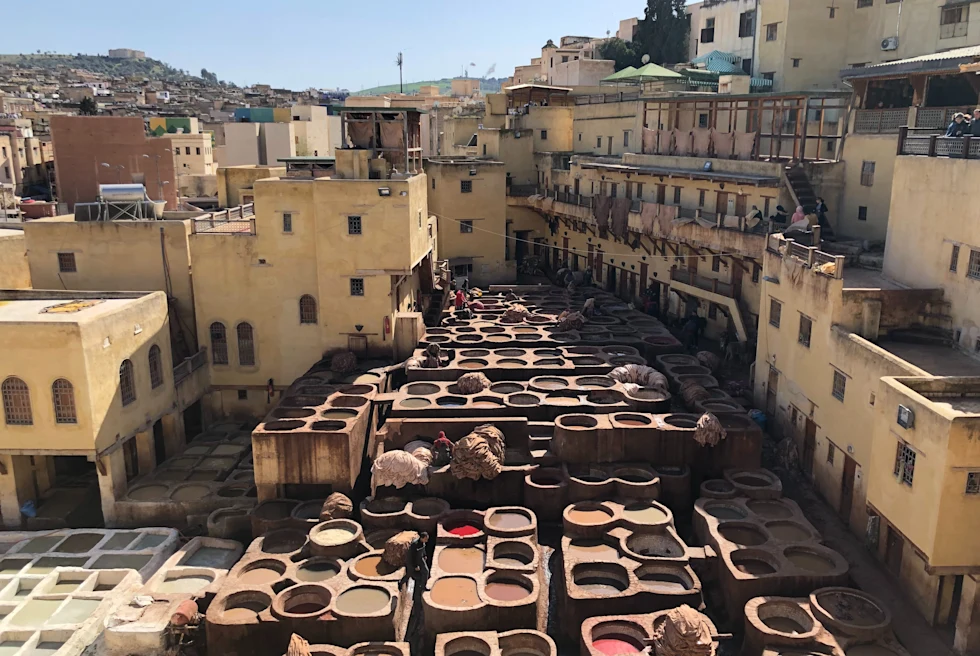
Fes is often referred to as the country’s cultural capital, mainly known for its Fes El Bali walled medina, with medieval architecture, vibrant souks and old-world atmosphere. The medina is the largest car-free urban area in existence today, and is a true labyrinth, even for many locals.
Wander around Medieval Fes, one of the world's great centers of education and culture, both Islamic and Jewish. Spend the day exploring the old city, visiting Al-Attarine Madrasa, a religious institution built in the 14th century with gorgeous architecture, checking out the pungent and unique leather tanneries and the splendid Funduk Nejjarine to take a peek into what life might have been like in the 18th century.
Make your way down Rue Talaa Kebira, where you’ll check out stalls of spices, ceramics, handwoven items and much more. You’ll also smell freshly-baked breads throughout from the communal bread ovens, a staple of life in the medina for the last few centuries.
Places to eat & drink in Fes
Savor a rooftop dinner at Fondouk Bazaar, with a spectacular and differentiated menu plus a view from inside the old city.
L'AMANDIER & Roof Top Garden offers fine dining, teaming up Moroccan and Mediterranean flavors with an equally matched list of Morocco’s exquisite wines, making it one of the best in town, if you’re looking for something a bit fancier.
Days 6 - 7: The Sahara Desert
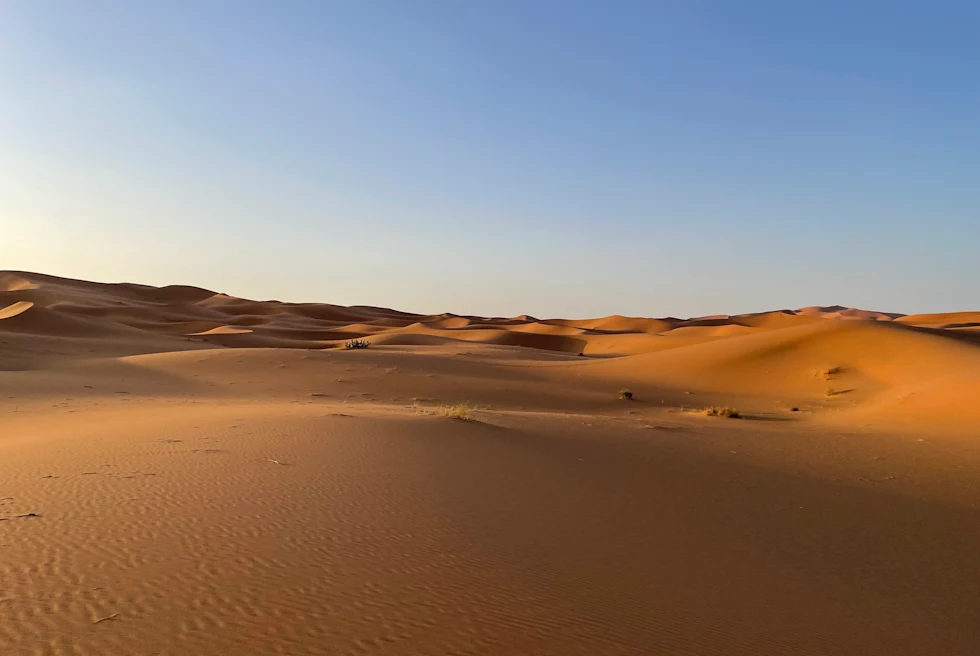
On your drive down to Erg Chebbi, you’ll pass Ifrane, known for its alpine-style architecture and ski slopes. Ifrane National Park, with its Atlas cedar forests is an incredible opportunity to see rare Barbary macaques in their own habitat. The drive south will take you past olive groves, a multitude of shepherds with their flocks, forests of cedar, pine and oak and valleys filled with palms. Behind you, you’ll enjoy views of the High Atlas Mountains in the distance.
Spend a night at Auberge Du Sud, enjoying the silence of the desert and, time permitting, a second night glamping in a luxury air-conditioned tent overlooking the great Erg Chebbi Sand Dunes.
You’ll take a private camel tour to the top of the sand dunes in the early evening, just in time to see one of the most spectacular sunsets you’ll ever experience. Take a walk away from the campsite after dinner to see constellations and bright stars.
For those sunrise lovers among you, set your alarm. It's worth it!
Days 8 - 9: High Atlas Mountains
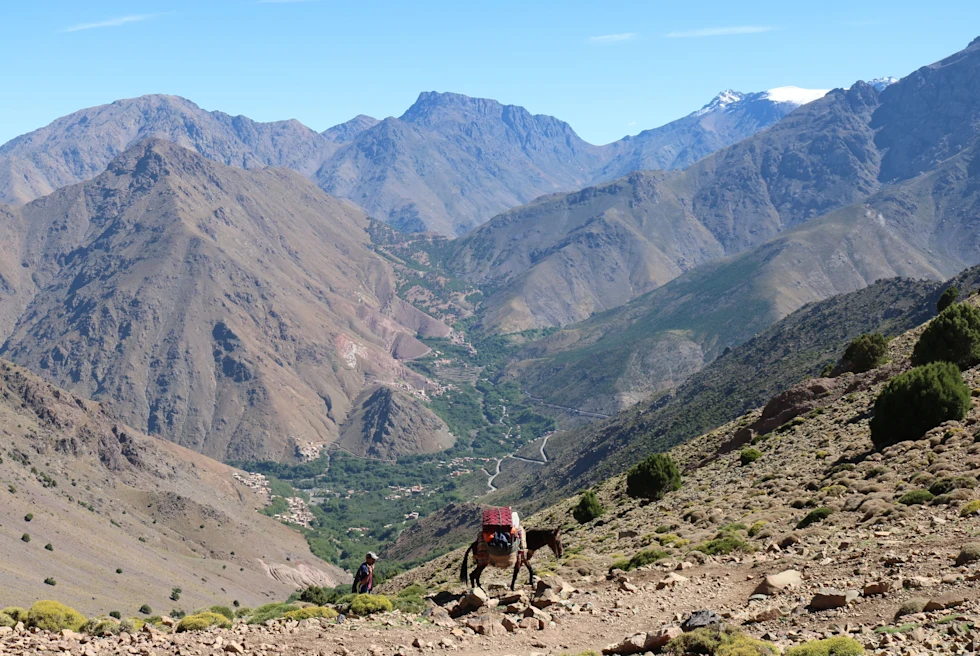
Head to Todra Gorge, a massive trench that rises over 250 meters to form one of the most dramatic and spectacular natural sights in Morocco. Many consider this to be Morocco’s version of the US’s Grand Canyon.
You’ll then become intimately acquainted with the mud-brick fortifications, known as Kasbahs. Visit Kalaat M'Gouna and Taourirt Kasbah en route to the most famous, the UNESCO World Heritage site of Ait-Ben-Haddou, a hilltop site that remains almost unchanged since the 11th century. Its grand Kasbah is considered the most beautiful in Morocco. You might even recognize it from some of your favorite Hollywood shows and movies (i.e. "Game of Thrones" and Gladiator).
Off-the-beaten-path in the High Atlas Mountains
En route to Marrakech, take the scenic route through the Grand Atlas Mountains called Tizi n'Tichka, to stop at the Telouet Kasbah. Not many foreign tourists make it to Telouet due to its more remote nature and limited tourist infrastructure, making it feel even more special.
Days 9 - 10: Marrakech
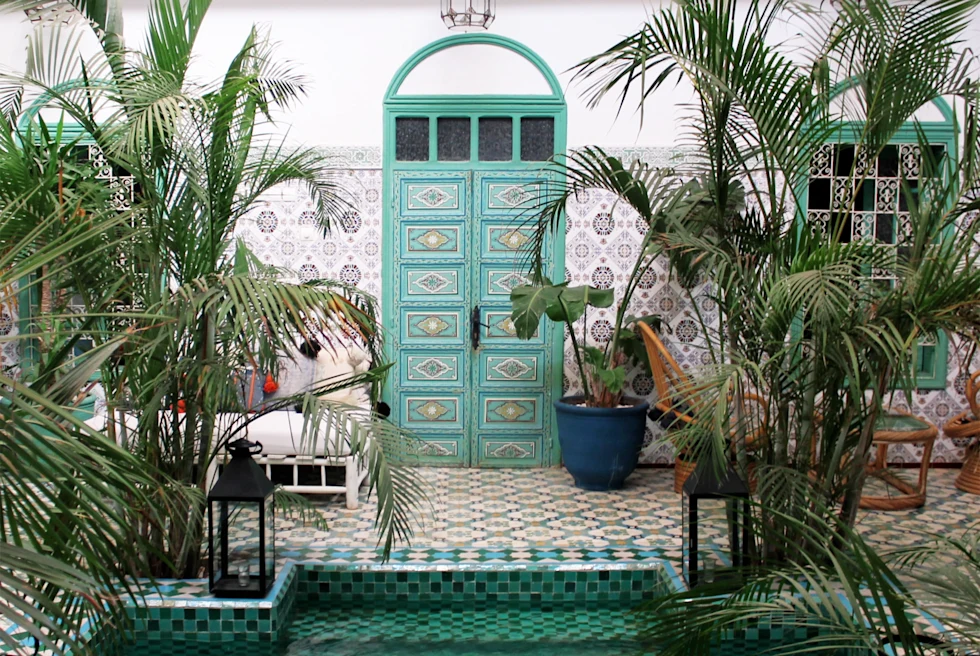
Marrakech has gained even more international attention as of late due to "Inventing Anna"’s prominent featuring of the incredible La Mamounia Hotel.
Many tourists with limited time in Morocco simply opt to spend it all in Marrakech. It's best to see the diversity across the country, but this former imperial city is home to some of the most beautiful palaces and gardens the country has to offer. The “Red City” has a densely-packed walled medieval medina dating to the Berber Empire, with maze-like alleys where thriving souks (marketplaces) sell traditional textiles, pottery and jewelry.
Don’t leave Marrakech without checking out the Djemaa el Fna, the main square at the center of the old city, and enjoy the liveliness. You’ll find monkeys on leashes (which is strange and cruel), snake charmers and drum circles. It’s quite the experience, though be careful of your surroundings and of pickpockets.
Bahia Palace and the stunning mosaic work at the opulent Saadian Tombs are both definitely worth a visit, as is the Ibn Youssef Madrasa, the ancient quranic college, founded in the 14th century, with delicate stucco work and mosaics. These are all incredible examples of Islamic architecture.
Make a timed reservation to visit Jardin Majorelle, a deep-blue garden named after the painter Jacque Majorelle. Yves-Saint Laurent was later gifted this garden by the city of Marrakech. Right next door, be sure to stop by the Yves-Saint Laurent Museum, where you’ll learn more about his life and work.
Places to stay in Marrakech
Four Seasons Resort Marrakech
La Mamounia
Places to eat & drink in Marrakech
Enjoy the Kabana Rooftop for a meal, with incredible views of the medina and the 12th-century Koutoubia Minaret, an architectural gem which dominates the city’s skyline.
For folks visiting or staying in the new city of Gueliz, La Trattoria (Italian) and Grand Café de la Poste (French fusion) are both incredible places to enjoy a varied menu of Italian and French cuisine.
Modern spotlight:
For those of you with a modern inclination, check out Cristiano Ronaldo’s Pestana CR7 Marrakech, built within the outdoor Moroccan-chique Avenue M Mall. You will likely have visited an argan oil cooperative, but the best place to get high-quality argan cosmetics products is at Nectarome (Avenue M Mall).

The Modern Travel Agency
Fora

Reach out to a Fora Advisor.
Did you like this guide? Reach out to customize and book your own experience with a Fora Advisor. Or, to chat about travel in general.
You can normally expect a response from Fora within a business day or so. You’ll also be subscribed to our travel newsletter (you can unsubscribe at any time).